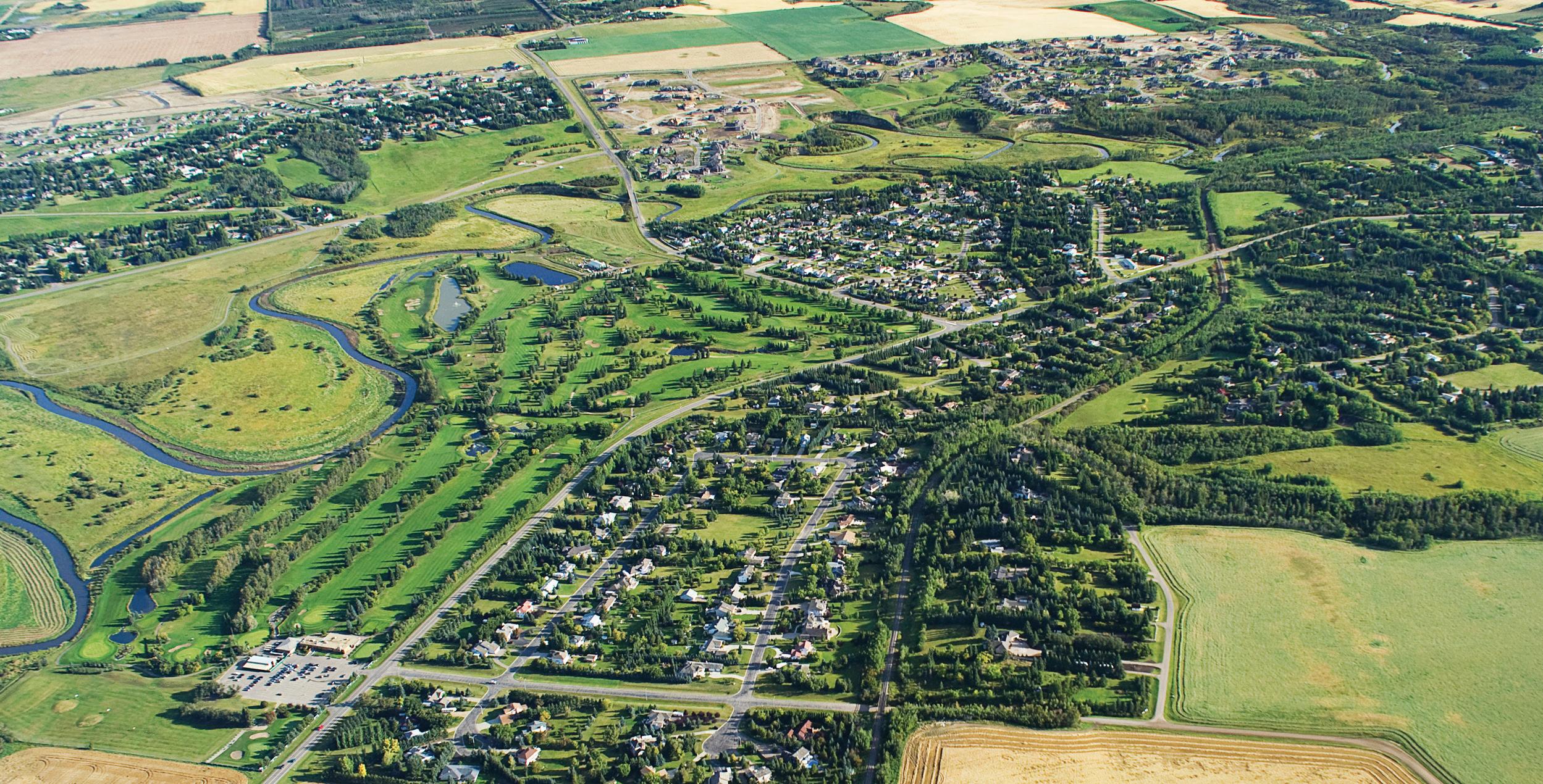
2 minute read
PLANNING TODAY FOR FUTURE GROWTH & SERVICES IN STURGEON VALLEY
from County Connections
The Sturgeon Valley is a unique residential community that, in the decades to come, could be home to more people, more services, and more amenities.
Expected growth will take place south of the existing Sturgeon Valley neighbourhoods, between the cities of St. Albert and Edmonton. Planned development will include a variety of housing options, new shopping and employment areas, new community services, recreation opportunities, and more.
“Sturgeon Valley is a gem within the region, and as it grows our Council is committed to ensuring it remains a unique community that we can be proud of, and that reflects input from residents and community partners,” said Mayor Alanna Hnatiw. “We’re committed to supporting a complete community with new housing options that appeal to families, seniors, younger people, new employment options for our residents, and local services that help keep cost-of-living manageable.”
After decades of past review and following an extensive public input process (one of the most significant public engagement efforts undertaken by Sturgeon County to date), the vision for the Sturgeon Valley was solidified in 2021. Council adopted bylaws that approved the Sturgeon Valley South Area Structure Plan and Sturgeon Valley Core Area Structure Plan, and amended the County’s Municipal Development Plan.
Together, these planning documents guide the development of the Sturgeon Valley area by:
> Specifying residential densification targets –as required by the Edmonton Metropolitan Region Growth Plan – including measures such as transitions to provide a “buffer” between existing residential communities and more densely-populated future neighbourhoods.
> Detailing areas for new residential and commercial development.
> Planning for the infrastructure and transportation improvements needed to support growth.
> Supporting a growing network of trails, parks and open spaces for recreational use and environmental protection.
> Protecting prime agricultural lands. Through planning for growth in Sturgeon Valley, the County has taken steps to respect the interests of existing residents and neighbourhoods, protect against future annexations, diversify Sturgeon County’s taxation base, and capitalize on the area’s location and existing infrastructure. At the same time, the County is enabling the creation of unique and distinct neighbourhoods that will meet the future needs of local and regional residents.
We encourage residents to stay engaged in this long-term development process and to weigh in on applications in the years and decades to come, as we build communities — together.
About Density In The Sturgeon Valley
Most of the Sturgeon Valley Core – where existing neighbourhoods are located –has been developed at a density of two housing units per net residential hectare and most are large single detached homes.
In recent development areas such as River’s Gate, density is closer to 10 housing units per net residential hectare. Remaining undeveloped areas in the valley core may develop to a maximum of 20 housing units per net residential subject to servicing availability.
In the Sturgeon Valley South areas (south and east of River’s Gate) the development density will vary, but requires transitioning from the densities of the Sturgeon Valley Core and an overall density of 35 housing units per net residential hectare. Closer to Edmonton and the Anthony Henday Drive, development densities will transition up to 45 units per net residential hectare. This aligns with the requirements of the Edmonton Metropolitan Region Growth Plan, which Sturgeon County must conform to.
Development speed is dependent on market conditions and the investment interest of local landowners and developers. Sturgeon County expects development to occur over decades. Residents will be engaged throughout that process.










